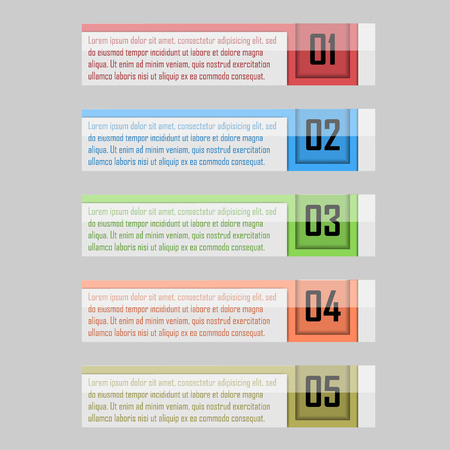1. Misinterpreting Your Kua Number’s Role in Modern Homes
When it comes to applying Feng Shui in the United States, one of the most common mistakes is misunderstanding how your personal Kua number fits into a modern American lifestyle. Many guides and resources are based on traditional Asian homes, which often have closed-off rooms and dedicated spaces. However, most American homes today feature open floor plans, multi-use rooms, and flexible living areas. This can make it confusing to figure out how to use your Kua number effectively.
Understanding Kua Numbers in Contemporary Spaces
Your Kua number helps you identify your lucky directions for things like working, sleeping, or relaxing. But with fewer walls and more open spaces, you might wonder: where does each direction actually begin and end? Heres a quick comparison:
| Traditional Layout | Modern American Layout |
|---|---|
| Separate rooms for each function (bedroom, study, dining room) | Open concept kitchens, combined living/dining areas |
| Easy to orient furniture in one direction per room | Multiple uses in one space—furniture faces different ways |
| Kua directions applied per room | Kua directions must be adapted for multi-use spaces |
Avoiding Outdated Interpretations
Don’t get stuck trying to force every piece of furniture or every corner of your home into strict Kua zones. Instead, use these tips:
- Prioritize Key Activities: Focus on aligning your bed, work desk, or main sitting area with your best Kua directions.
- Flexible Placement: If an entire room can’t face your lucky direction, try to position yourself that way when doing important tasks.
- Adapt to Multi-Use Spaces: In an open-plan home, use rugs, screens, or lighting to subtly define zones that support your Kua number’s energy.
- Stay Practical: Remember that comfort and functionality matter too. It’s okay if not everything matches perfectly—balance is key.
By understanding how Kua numbers fit into contemporary American homes, you can avoid outdated interpretations and create a space that feels both modern and personally supportive.
2. Overlooking Your Daily Routine and Living Patterns
When applying your Personal Kua Number in a Western lifestyle, it’s easy to forget how much your daily routine and living patterns affect the energy flow in your space. Unlike traditional feng shui settings, modern American homes often juggle multiple activities—working from home, family gatherings, roommates, and even pets. Let’s break down how you can adapt Kua number recommendations to fit your busy schedule and unique living situation.
Adapting Feng Shui for Busy Schedules
If you have a packed calendar or work odd hours, you might think there’s no time to worry about Kua directions. But small changes can make a big difference. For example, if you work from home, try to position your desk so that you face your favorable direction based on your Kua number while working or attending online meetings. Even if you can’t move large furniture, turning your chair or adjusting your laptop angle during important tasks helps align with positive energy.
Quick Tips for Work-from-Home Setups
| Situation | Kua-Friendly Adjustment |
|---|---|
| No dedicated office | Use a portable laptop stand and rotate it toward your lucky direction for calls or focused work. |
| Shared workspace with family/roommates | Take turns using the most auspicious spot during key moments (like interviews or presentations). |
| Limited space | Add a small plant or crystal in your best direction on your desk as a subtle energy boost. |
Navigating Shared Living Environments
Living with others? Whether you’re in an apartment with roommates or sharing a house with family, finding the “perfect” orientation for everyone is tough. It’s common for household members to have different Kua numbers and favorable directions. Instead of stressing about perfection, focus on personal spaces—your side of the bed, favorite chair, or reading nook—and make those areas work for you energetically.
Personalizing Small Spaces
- Place personal items (like photos or keepsakes) in your lucky direction within your private area.
- If possible, sleep with your head pointed toward one of your favorable directions.
- Use a room divider or bookshelf to subtly shift energy flow without major renovations.
Remember: Adapting feng shui to fit American lifestyles is about flexibility and making thoughtful tweaks—not rigidly following every rule. With these simple adjustments, you can harmonize Eastern wisdom with Western living and keep good vibes flowing throughout your day.

3. Ignoring Western Architectural and Cultural Design Elements
When using your Personal Kua Number to arrange your home, it’s important not to overlook how typical American home features can influence feng shui recommendations. Many classic Kua number guidelines come from traditional Chinese architecture, which often looks very different from American homes. Recognizing these differences helps you create a space that works both for your energy and your lifestyle.
How American Home Features Interact with Kua Advice
Here are some common Western design elements and how they might affect your Kua number feng shui:
| Feature | Common Feng Shui Concern | Western Context Consideration |
|---|---|---|
| Attached Garage | Main entrance may not be the “energetic” front door; garages can bring clutter or negative energy if messy. | Decide whether to treat the garage entrance or traditional front door as your main entry point when applying Kua directions. Keep garage tidy and well-lit for positive energy flow. |
| Open Kitchen/Living Spaces | Kua guidance usually separates kitchen, dining, and living rooms for clarity of energy zones. | Use rugs, furniture placement, or plants to subtly define spaces according to Kua recommendations, even in an open floor plan. |
| Master Bedroom on Different Floor | Kua advice often presumes all rooms are on one level. | If your master is upstairs or in a separate wing, apply your Kua favorable directions specifically within that space rather than the whole house layout. |
| Large Windows & Sliding Doors | Kua traditions value control over light and airflow. | Add curtains or screens if needed to regulate energy flow without sacrificing natural light or views Americans love. |
Tips for Blending Feng Shui with Western Style
- Adapt, don’t force: Use your Kua number as a guideline but adjust placements so they make sense for your lifestyle and home layout.
- Balance function and energy: For example, if your best direction is East but your living room faces West, create a special area facing East for meditation or work within the room.
- Cultural comfort matters: Don’t feel you must change everything—small adjustments like moving a chair or adding a mirror can make a difference without disrupting your daily life.
Remember:
The most successful feng shui happens when you respect both the wisdom of the Kua system and the realities of American home living. Adjusting to Western architectural norms allows you to enjoy better harmony without sacrificing what makes your house feel like home.
4. Applying Rigid Feng Shui Rules Without Personalization
Feng Shui, especially when using your Personal Kua Number, can offer great benefits for your home and lifestyle. However, one common mistake is following traditional rules too strictly without considering your unique circumstances or Western lifestyle. Not every Feng Shui tip from ancient China will fit seamlessly into a modern American household, and thats okay! The key is to avoid a one-size-fits-all approach by personalizing suggestions to match your values, daily routines, and family setup.
Why Personalization Matters
Your living space should reflect who you are and support your needs. For example, the traditional advice might suggest placing your bed in a specific direction based on your Kua Number. But what if your bedroom layout or shared living situation makes this impossible? Or perhaps Western open-plan homes dont have defined rooms like classic Chinese architecture. Instead of stressing over rigid placements, focus on adapting the guidance to work with what you have.
Common Areas Where Customization is Needed
| Traditional Rule | Western Lifestyle Adaptation |
|---|---|
| Place work desk facing your best direction | Use portable items (like lamps or plants) to activate positive energy if you cant move large furniture |
| No mirrors facing the bed | If space is tight, use a curtain or folding screen at night instead of removing mirrors completely |
| Dine facing a certain direction | Focus more on creating a harmonious atmosphere with lighting and décor if table orientation can’t be changed |
| Family altar in a specific spot | Adapt by setting up a small shelf or meaningful photo display anywhere that feels respectful and accessible |
Tips for Blending Feng Shui With Your Life
- Discuss changes with all household members to honor everyone’s comfort and routines.
- Prioritize adjustments that feel natural—don’t force anything that disrupts your happiness or convenience.
- Mix Feng Shui suggestions with your favorite Western décor styles—balance both aesthetics and energy flow!
- If you rent or share housing, try subtle shifts (like color accents or movable décor) rather than major renovations.
- Remember, even small mindful changes can make a big difference when they’re tailored to you.
By customizing Feng Shui practices for your own life, you’ll enjoy positive energy without sacrificing comfort or authenticity in your American home.
5. Relying Solely on Decor and Symbols Instead of Practical Changes
When applying Feng Shui in a Western lifestyle, it’s easy to think that adding a few lucky charms or decorative items is enough. While symbols and décor can help set the mood, true benefits come from making practical adjustments in your living and working spaces. Focusing only on decorations without addressing how you use your space can limit the positive impact of your Personal Kua Number.
Why Practical Changes Matter More Than Decorations
Feng Shui is about creating harmony and improving energy flow (Chi) in your environment. This goes beyond hanging wind chimes or placing a money frog on your desk. It’s about arranging your furniture, choosing the right spots for daily activities, and ensuring rooms support your needs and goals. For example, if your workspace is cluttered or you constantly bump into furniture, no amount of lucky bamboo will fix that energy block.
Common Areas for Practical Adjustments
| Area | Decor/Symbols | Practical Change |
|---|---|---|
| Entryway | Welcome mat with good luck symbol | Keep entry clear for smooth traffic flow |
| Home Office | Lucky charm on the desk | Desk faces your best direction (based on Kua number) |
| Living Room | Feng Shui art or crystals | Sofas arranged to encourage conversation and comfort |
| Bedroom | Auspicious figurines on nightstands | Bed positioned to avoid direct line with door; clutter-free under bed |
| Kitchen | Red decorations for luck | Organized counters; stove in a commanding position if possible |
Tips for Effective Feng Shui in Your Daily Life
- Prioritize comfort and function: Make sure rooms are easy to move through and support your lifestyle needs.
- Align workspaces with your Kua number: For example, if your best direction is East, try to face that way when working or studying.
- Tidy up regularly: Clutter blocks positive energy, so keep surfaces and pathways clear.
- Use décor as finishing touches: Add symbolic items after you’ve made bigger functional changes.
- Create multi-use spaces thoughtfully: In open-plan homes, use rugs or bookshelves to define areas rather than just putting up symbolic objects.
The Bottom Line: Go Beyond Decoration for Real Results
If you want the full benefits of Feng Shui based on your Personal Kua Number, don’t stop at surface-level fixes. Focus first on meaningful changes—like improving room layouts, traffic flow, and workspace orientation—before layering in any traditional symbols or décor. This approach fits seamlessly into American homes and makes Feng Shui feel natural in everyday life.


